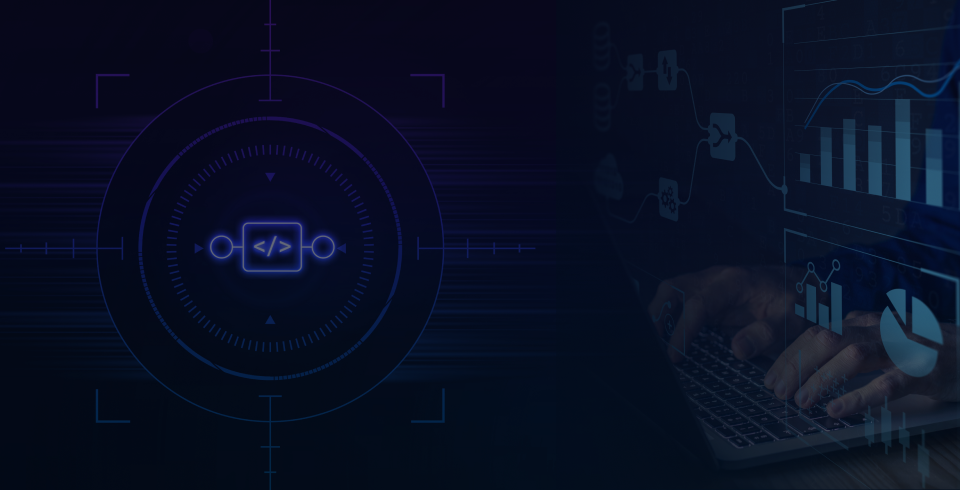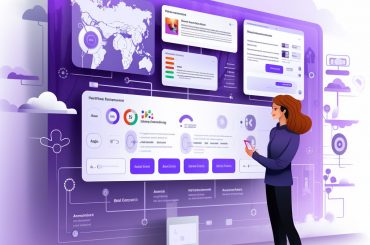Table of Contents
A well-maintained IT infrastructure not only increases employee productivity but also makes it easy for your IT team to scale operations. We outline the three phases in this article to help you manage your IT infrastructure successfully and create a productive digital workspace that is backed by the appropriate technological solutions.
What Is IT Infrastructure Management?
The management of technical and operational elements—including hardware, software, rules, procedures, information, physical locations, and tools—is known as infrastructure management. Systems management, network management, and storage management are possible divisions. The enterprise IT infrastructure management is utilized for minimizing duplication of effort, guarantee compliance with IT standards and laws, enhance information flow, support adaptability in shifting business marketplaces, promote IT interoperability, uphold efficient change management, and lower total IT expenses.
What Are IT Infrastructure Management Software?
No matter where they are located, ITIM tools capture the health and resource usage of IT infrastructure components (for example, in a data center, at the edge, infrastructure as a service [IaaS] or platform as a service [PaaS] in the cloud). This makes it possible for I&O leaders to keep track of and compile statistics on the resource usage and availability metrics of both physical and virtual objects, including as servers, containers, network equipment, database instances, hypervisors, and storage. Notably, these technologies perform historical analysis of data or trending of the variables they track in addition to real-time data collection.
The Best IT Infrastructure Management Solutions
Zabbix
One of the most widely used open-source infrastructure monitoring tools available is Zabbix. It’s a flexible IT infrastructure management service with a variety of monitoring options, including network, server, cloud, application, and database monitoring, to mention a few. Zabbix offers a wide range of visualization tools that let you assess the health of your infrastructure. To find and fix problems in real-time, you can use the tool’s alerting and remediation features.
Zabbix collects crucial data like CPU, memory, and network utilization and works with a variety of operating systems (including Windows, Linux, Unix, etc.). For the automated identification of elements to be monitored, you can utilize its pre-built templates, with the option to create new templates if necessary. You can configure Zabbix to send warnings through email, SMS, script alerts, or other methods based on preset triggers.
The Elastic Stack
Three open-source projects, Elasticsearch, Logstash, and Kibana, are combined to create the Elastic Stack (ELK Stack) monitoring system. While Logstash assists with injecting and transforming data from many sources before delivering it to Elasticsearch, Elasticsearch is in charge of search and analytics. Through the use of graphs and charts, Kibana makes it possible to visualize data that Elasticsearch has studied. These features can be utilized to give insights into the health of your environment and metrics gathered from various sources inside your infrastructure.
The Metricbeat module, which combines metrics from numerous sources like servers, Docker containers, Kubernetes, and more, enables the integration for infrastructure monitoring. With the aid of the module, Kibana may visualize the status of the infrastructure using index patterns. Additionally, you may configure alerts for the index- and metrics-based thresholds and notify recipients by email, Slack, Microsoft Teams, or other third-party integrations.
Prometheus
Prometheus is a well-known open-source infrastructure monitoring tool that was initially created by former Google employees to monitor extensively containerized systems. It utilises time-series data. The services it keeps track of ought to expose an HTTP metrics endpoint that Prometheus can check on a regular basis. This API should provide access to various metrics and their current values. In some circumstances, you can’t modify the containerized service to transmit the metrics Prometheus needs. In that case, the metrics can be gathered by bundling the Prometheus exporter as a sidecar pod container with the container service.
Prometheus doesn’t really demand distributed storage in the infrastructure and utilizes a single node-based configuration. Additionally, it employs Prometheus Query Language (PromQL) for instantaneous querying and data aggregation of monitoring data. Based on set alerting rules, the Alertmanager creates and distributes alerts.
SolarWinds Server & Application Monitor (SAM)
SAM (SolarWinds Server and Application Monitor) offers thorough monitoring of both your on-premises and cloud-based IT infrastructure. More than 1,200 apps and systems are supported out-of-the-box, and more community-contributed integration templates are also available. The program enables you to keep an eye on infrastructure parts via WMI, SNMP, PowerShell, REST API, and other methods.
For Windows and Linux, SAM includes predefined OS monitoring configurations, allowing for quicker onboarding and performance monitoring. Furthermore, you don’t require numerous IT monitoring solutions. For server hardware from various manufacturers (Dell, HP, IBM, etc.), SAM monitors performance, hard-drive status, fan status, power source, and temperatures from a single console. This also applies to reporting and alerting. Additionally, Real-Time Process Explorer (RTPE) enables managers to access data for both monitored and unmonitored WMI and SNMP processes via the web console without logging into the servers.
Datadog Infrastructure Monitoring
Datadog Infrastructure Monitoring gives you insight into the on-premises and in-cloud performance status of the infrastructure components that make up your system. You can utilize Datadog’s thousands of built-in infrastructure metrics to see how the application stack, containers, virtualization platform, and other components are doing. More than 450 integrations, including well-known stacks like Kubernetes, Docker, and Apache Kafka, are supported by the tool using an open-source agent.
With Datadog Infrastructure monitoring, you can dig down to the condition of specific hosts and receive consolidated dashboards that provide you visibility into the health of your infrastructure. It offers intelligent warning technology and automatic anomaly detection.
Conclusion
IT infrastructure management services should offer a bird’s-eye view of the health of your IT environment, including performance, bandwidth availability, utilization, and security. Regardless of how or where the application is hosted, it should be able to produce infrastructure warnings based on the tracked metrics and produce reports that deliver insights. While some solutions offer full-spectrum monitoring with customizability, others are more focused on particular elements of this (such as performance measurements).





